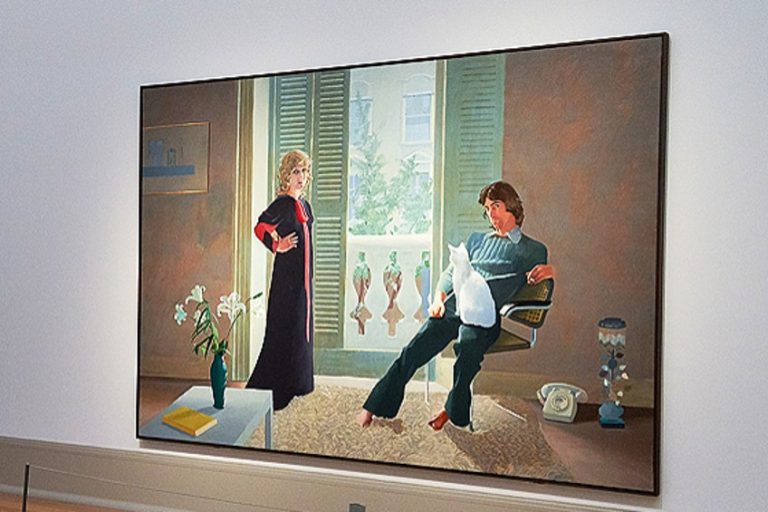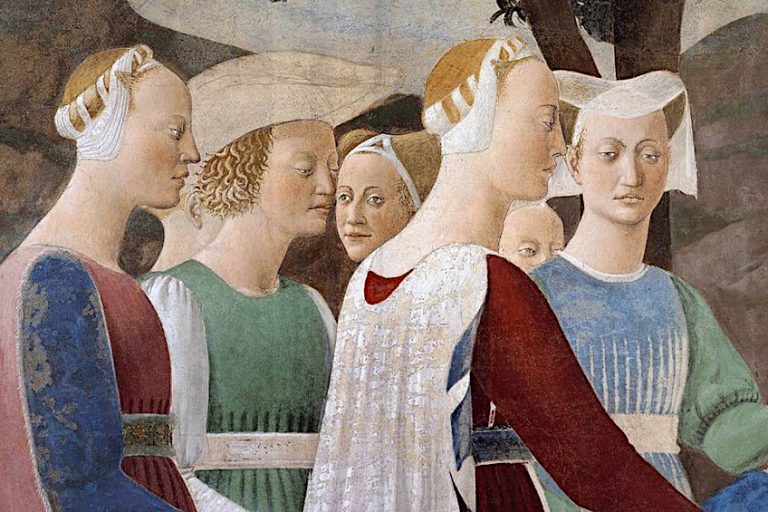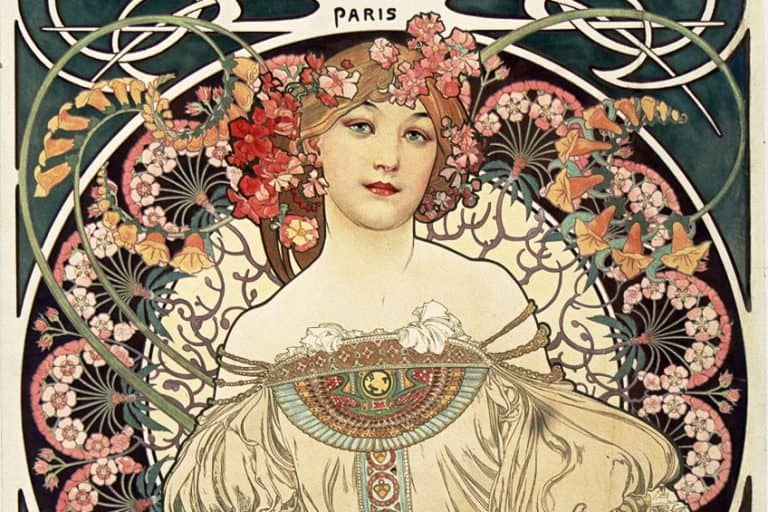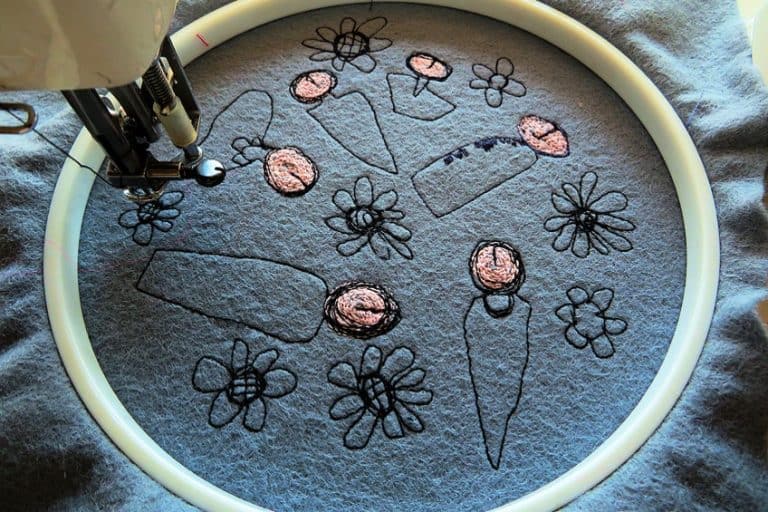Christo and Jeanne-Claude – A Visionary Installation Duo
Christo and Jeanne-Claude, a visionary duo in the realm of contemporary art, have left an indelible mark on the world through their monumental and ephemeral installations. Renowned for their groundbreaking environmental artworks, Christo and Jeanne-Claude redefined the boundaries of traditional artistic practices by wrapping entire landscapes, buildings, and monuments in fabric, thereby transforming familiar environments into captivating and thought-provoking spectacles. Their collaborative works, characterized by sheer scale, meticulous planning, and a profound engagement with the surrounding environment, invite audiences to reconsider notions of space, perception, and temporality. Through their unwavering dedication to their craft and their commitment to realizing seemingly impossible visions, Christo and Jeanne-Claude have cemented their legacy as pioneers of environmental art, inspiring generations of artists and spectators alike to see the world through new eyes.
Key Takeaways
- Christo and Jeanne-Claude are renowned for their large-scale environmental installations using fabric.
- They merged art with architecture to alter public space perceptions uniquely and temporarily.
- Their legacy includes a world inspired by their innovative art and reshaped perceptions of landmarks.
Life and Collaboration
| Date of Birth | Christo (June 13th, 1935) and Jeanne-Claude (June 13th, 1935) |
| Date of Death | Christo (May 31st, 2020) and Jeanne-Claude (November 18th, 2009) |
| Place of Birth | Christo (Bulgaria) and Jeanne-Claude (Morocco) |
| Nationality | American and Moroccan |
Christo Vladimirov Javacheff and Jeanne-Claude Denat de Guillebon, known collectively as Christo and Jeanne-Claude, were an influential pair in the world of contemporary public art. Both born on June 13, 1935, in Bulgaria and Morocco respectively, their artistic partnership was as intertwined as their personal lives. Their collaboration is marked by a unique blend of artistic expression, environmental intervention, and social commentary.

As pioneers of environmental art, they became famous for their dramatic and ephemeral installations that transformed familiar landscapes and landmarks with their signature technique of wrapping structures in fabric. Their work was a study in contrasts: the temporal nature of their art juxtaposed against the monumental scale of their installations. They wrapped entire buildings, coastlines, and islands, redefining the boundaries between art and environment. Despite encountering legal and logistical challenges, they successfully completed numerous awe-inspiring projects worldwide, leaving a lasting impact on each.
Childhood and Education
Christo was born in Bulgaria, where he developed an early interest in art. He studied at the Fine Arts Academy in Sofia before moving to Prague and later, Vienna. Jeanne-Claude was born in Morocco but raised in France.
Her education was not as focused on art as Christo’s, providing a contrasting background to their partnership.
Early Life and Meeting
In 1958, Christo moved to Paris, where he met Jeanne-Claude. From the outset, they discovered shared passions and perspectives that would fuel their future collaborations. Initially, their relationship was personal, but it swiftly progressed to an artistic collaboration that would define their lives.
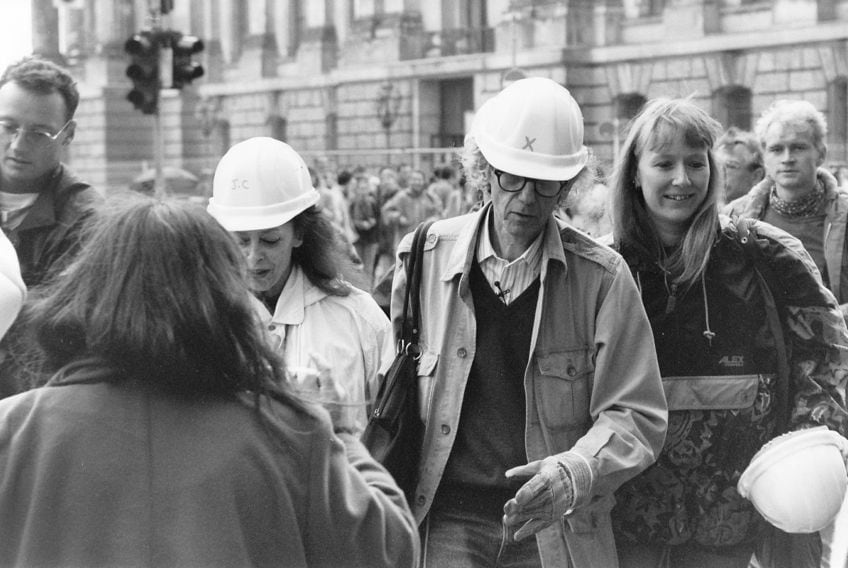
Collaborative Works
Their work often involved wrapping large structures or outdoor landscapes, notably the Wrapped Reichstag in Berlin and The Pont Neuf Wrapped in Paris. In New York, their project The Gates in 2005 transformed Central Park with 7,503 saffron-colored gates.
Each work was temporary, highlighting the ephemeral nature of art.
Artistic Philosophy
Christo and Jeanne-Claude believed in the freedom of art, unbound by political or financial constraints. Their art was self-funded, and they staunchly defended the artistic, non-utilitarian value of their installations. They saw their works as feats that broke the confines of traditional gallery spaces.

Mature Period
After Jeanne-Claude’s death in 2009, Christo continued their work, upholding their shared vision and completing projects they had planned together. The large-scale environmental artworks became a symbol of their enduring partnership.
This left a transformative impact on the places that embraced their art.
Artistic Techniques and Materials
Christo and Jeanne-Claude’s art practice was characterized by the innovative use of fabrics to create environmental art installations that both highlighted and transformed natural landscapes and architectural features.

Wrapping and Fabric Usage
Fabric was central to Christo and Jeanne-Claude’s art, with a common technique being the wrapping of various structures. The use of fabric was both aesthetic and symbolic, covering and unveiling the essence of the wrapped objects. The artists used textiles that ranged from translucent to opaque, often in striking colors. Materials played a pivotal role in the iconic installations of Christo and Jeanne-Claude, shaping both their visual impact and conceptual resonance.
The duo masterfully employed vinyl, silk, polyamide, and woven polyester to realize their ambitious visions, each material imbued with unique properties that contributed to the immersive experience of their works.
From the saffron-hued fabric of The Gates to the aluminum-colored drapery adorning the Reichstag, these materials reflected, transmitted, or obscured light, inviting viewers to engage with the interplay of color, texture, and form. In exploring the reflective, translucent, or opaque qualities of their chosen materials, Christo and Jeanne-Claude crafted environments that transcended the physical and the ephemeral, leaving an indelible mark on the landscape of contemporary art.
Environmental Integration
Their environmental artworks were designed to interact with and enhance their settings, bringing attention to both natural and urban landscapes. This integration into the environment is synonymous with Land Art, where the location is as much a part of the work as the materials used. For example, Running Fence traversed California’s landscape, accentuating the contours of the hills and valleys.

Christo and Jeanne-Claude selected diverse locations like parks, buildings, and coastal areas for their installations. They integrated their artworks by following landforms or creating floating installations, blending seamlessly with the environment. Whether in Central Park or along coastal shores, their meticulous choices transformed ordinary spaces into extraordinary experiences.
Preparatory Work
Extensive preparatory work was essential, including technical drawings and planning to address engineering and environmental concerns. For each project, Christo and Jeanne-Claude produced preparatory drawings which were not only practical but also works of art in their own right. These detailed plans and sketches were crucial steps toward the successful realization of their large-scale installations.
Christo and Jeanne-Claude’s artistic endeavors were underpinned by meticulous planning and in-depth drawings.
Their process involved structural analysis, securing permissions, and conducting environmental impact studies to ensure the feasibility and sustainability of their projects. From technical blueprints to artistic renderings, their drawings served as both practical tools and expressive visions, translating their conceptual ideas into tangible forms. Through their careful planning and precise execution, Christo and Jeanne-Claude brought their monumental visions to life, leaving an enduring legacy in the annals of contemporary art.
Major Projects and Installations
Christo and Jeanne-Claude are renowned for their distinctive large-scale environmental art installations that frequently envelop landmarks and natural features in fabric. The duo’s art has captivated global audiences, transforming familiar landscapes into temporary displays of color, form, and a unique interpretation of space.
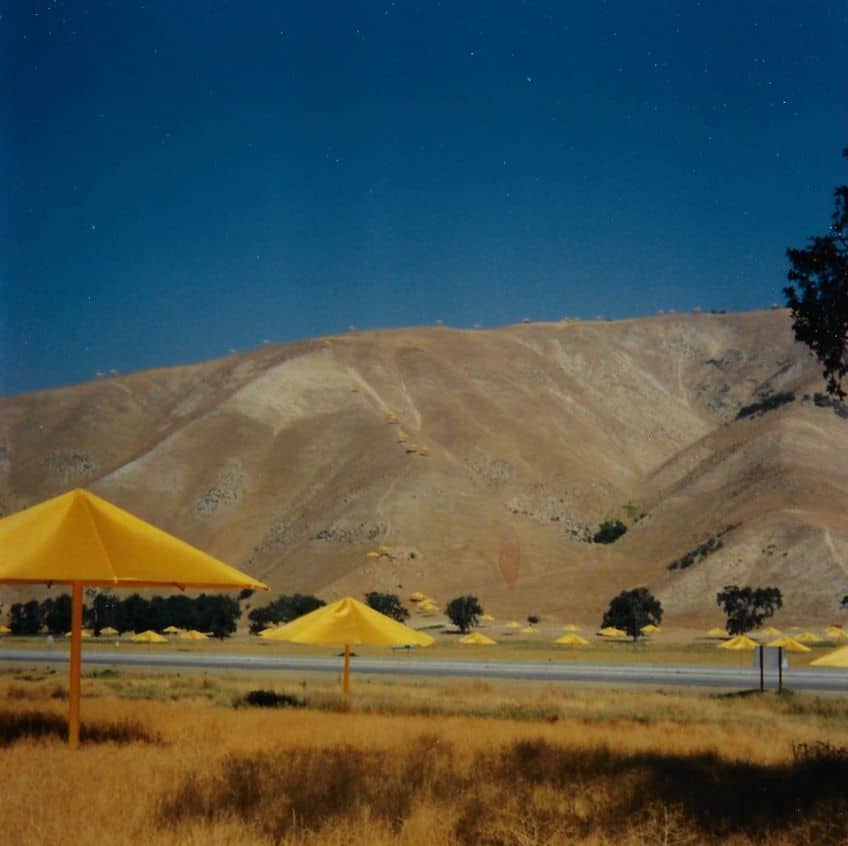
Surrounded Islands (1983)
| Title of Work | Surrounded Islands |
| Date Created | 1983 |
| Location | Biscayne Bay, Miami, United States |
Surrounded Islands stands as one of Christo and Jeanne-Claude’s most iconic and ambitious environmental artworks. In 1983, the duo encircled eleven islands in Miami’s Biscayne Bay with 6.5 million square feet of pink woven polypropylene fabric, transforming the landscape into a vivid and surreal seascape.
The installation, which was in development for several years, aimed to draw attention to the beauty and fragility of the natural world while highlighting the interplay between art and environment.
As the fabric gently draped the islands’ contours, it created a striking visual contrast against the azure waters, inviting contemplation on the relationship between humanity and nature. Surrounded Islands remains a testament to Christo and Jeanne-Claude’s ability to evoke wonder and provoke reflection through their ephemeral and monumental interventions in the landscape.
Wrapped Reichstag (1995)
| Title of Work | Wrapped Reichstag |
| Date Created | 1995 |
| Location | Berlin, Germany |
Wrapped Reichstag stands as a monumental testament to the artistic vision and audacity of Christo and Jeanne-Claude. In 1995, after decades of planning and negotiation, the duo enveloped the historic Reichstag building in Berlin with over one million square feet of silver fabric.
This transformative act not only altered the physical appearance of the iconic structure but also ignited profound conversations about history, identity, and the passage of time.
As the shimmering fabric billowed in the wind, it symbolized both the fragility and resilience of democracy, echoing the building’s tumultuous past and its hopeful future. Wrapped Reichstag remains a landmark achievement in contemporary art, demonstrating Christo and Jeanne-Claude’s ability to transcend boundaries and capture the imagination of millions around the world.
The Gates (2005)
| Title of Work | The Gates |
| Date Created | 2005 |
| Location | Central Park, New York City, United States |
The Gates stands as a vibrant testament to the transformative power of art and its ability to redefine urban spaces. In 2005, Central Park in New York City became the stage for Christo and Jeanne-Claude’s monumental installation, featuring 7,503 gates adorned with saffron-colored fabric panels that meandered through the park’s pathways.
This breathtaking transformation turned the park into a symphony of color and movement, inviting visitors to explore and interact with the environment in new and unexpected ways.
This installation brought a wave of warmth and whimsical paths to the wintry landscape of the park. As sunlight filtered through the fabric and shadows danced along the pathways, The Gates created a dynamic and immersive experience that captured the essence of the city and the spirit of collective joy and wonder. Christo and Jeanne-Claude’s masterful creation continues to resonate as a testament to the power of art to inspire, provoke, and unite communities.
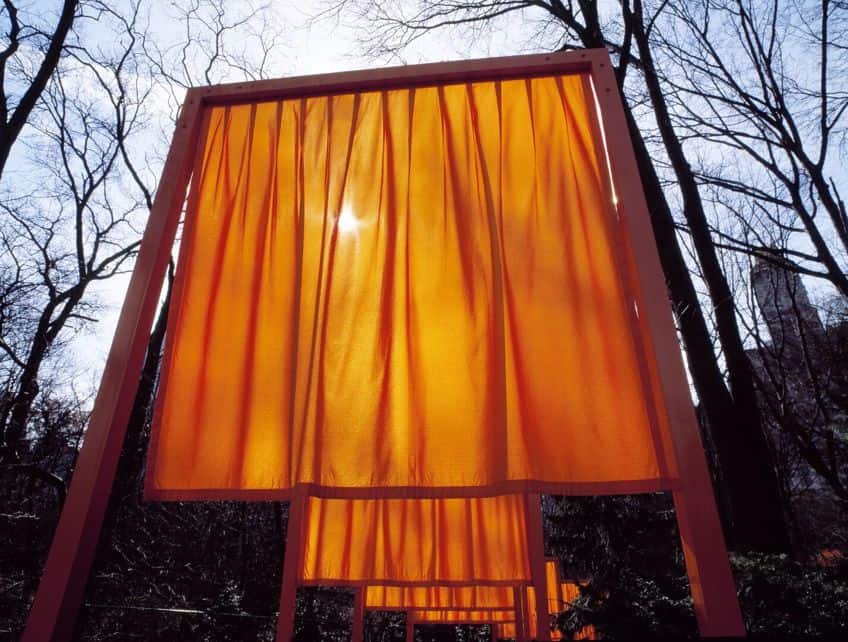
Floating Piers (2016)
| Title of Work | Floating Piers |
| Date Created | 2016 |
| Location | Lake Iseo, Italy |
Floating Piers emerged as a mesmerizing testament to the boundless imagination and technical prowess of Christo and Jeanne-Claude. In 2016, Lake Iseo in Italy became the canvas for their visionary installation, consisting of 100,000 square meters of shimmering yellow fabric draped over modular floating docks. These golden walkways connected the shores of Sulzano and Monte Isola to the small island of San Paolo, inviting visitors to embark on a surreal journey across the water’s surface.
As the piers undulated with the gentle rhythm of the lake, they created a sensation of walking on water, blurring the boundaries between land and liquid.
Floating Piers captured the imagination of thousands, offering an ephemeral yet profound experience of art, nature, and human connection. Christo and Jeanne-Claude’s creation continues to inspire awe and wonder, reminding us of the transformative potential of art to transcend the constraints of the everyday and transport us to realms of beauty and possibility.
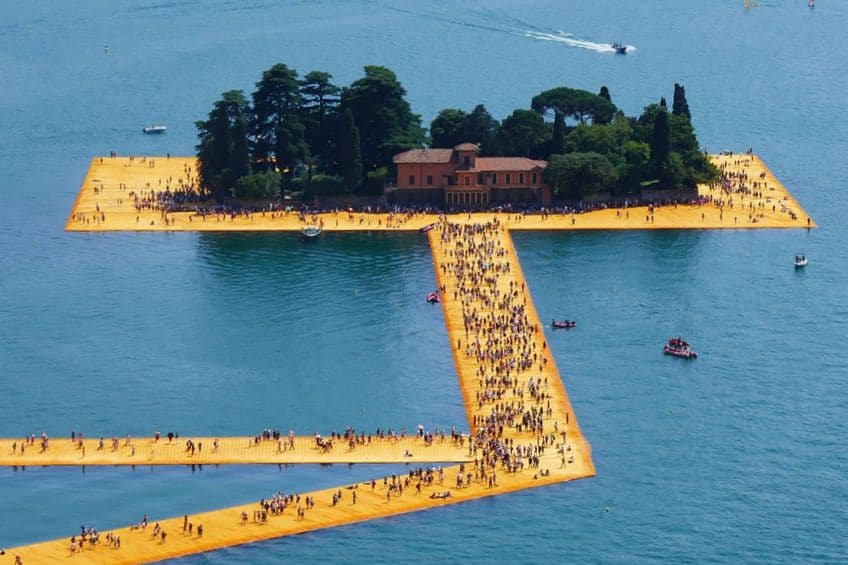
Legacy and Impact
Christo and Jeanne-Claude have left an indelible mark on the world of contemporary art and public perception through their monumental environmental artworks, which have been critically acclaimed and documented extensively.
They have earned numerous awards for their contributions to art and culture.
Public Perception and Critique
Their projects, such as The Gates in Central Park, were viewed by millions and have been subjects of both admiration and debate. Critics have praised the artists for their ability to transform spaces and engage the public in a unique, powerful experience of art. However, discussions around environmental impact and the temporary nature of their work have also arisen. The projects by Christo and Jeanne-Claude often provoked dialogue on the impermanence of art and the interplay between landscapes and human intervention.

Documentation and Awards
Christo and Jeanne-Claude’s installations have been extensively documented through films, photographs, and books, providing a prolific archive of their work. A documentary featuring their project ‘The Umbrellas’ received an Academy Award nomination, underscoring the significance of their art in the cinematic and cultural narrative.
Their achievements were recognized with awards like the Praemium Imperiale for their contributions to the arts.
Posthumous Exhibitions
Following Jeanne-Claude’s death in 2009 and Christo’s passing in 2020, their art continued to draw attention and admiration. Posthumous exhibitions have been vital in continuing their legacy, allowing new audiences to experience the grandeur and impact of their installations. These exhibitions serve as powerful reminders of the pair’s pioneering work in public art and offer insights into their creative process.

The enduring legacy of Christo and Jeanne-Claude resonates far beyond the realm of contemporary art. Through their imaginative and audacious installations, they challenged conventional notions of space, prompting viewers to reconsider their relationship with the environment and the built world around them. Their collaborative spirit, unwavering determination, and boundless creativity continue to inspire artists and audiences alike, reminding us of the transformative power of art to provoke thought, evoke emotion, and ignite collective imagination. As their ephemeral works endure in the memories of those who witnessed them and in the pages of art history, Christo and Jeanne-Claude remain beacons of innovation, leaving behind a legacy that transcends the boundaries of time and space.
Frequently Asked Questions
What Are the Distinctive Characteristics of Christo and Jeanne-Claude’s Art Style?
Christo and Jeanne-Claude’s artworks are widely recognized for their massive scale and the use of fabric to alter perceptions of space. Their approach encompasses environmental interventions that often utilize commonplace materials, transforming them into new visual experiences by wrapping structures or landscapes, as seen in projects like The Pont Neuf Wrapped and The Gates.
How Have Christo and Jeanne-Claude’s Installations Impacted Public Art Discourse?
The couple’s installations have challenged and expanded the boundaries of public art. Their work, such as The Gates in Central Park, which attracted over four million visitors during its 16-day display, initiated conversations about the transient nature of art, its accessibility, and the community engagement it can foster.
What Legacy Did Jeanne-Claude Leave in the Field of Art Following Her Death?
Following Jeanne-Claude’s death in 2009, her legacy continues to influence artists and the general approach to large-scale public art projects. Her joint artistic vision with Christo pushed the limits of what could be imagined and executed in shared public spaces, setting a precedent for future works that engage the environment and tap into social discourse.
Isabella studied at the University of Cape Town in South Africa and graduated with a Bachelor of Arts majoring in English Literature & Language and Psychology. Throughout her undergraduate years, she took Art History as an additional subject and absolutely loved it. Building on from her art history knowledge that began in high school, art has always been a particular area of fascination for her. From learning about artworks previously unknown to her, or sharpening her existing understanding of specific works, the ability to continue learning within this interesting sphere excites her greatly.
Her focal points of interest in art history encompass profiling specific artists and art movements, as it is these areas where she is able to really dig deep into the rich narrative of the art world. Additionally, she particularly enjoys exploring the different artistic styles of the 20th century, as well as the important impact that female artists have had on the development of art history.
Learn more about Isabella Meyer and the Art in Context Team.
Cite this Article
Isabella, Meyer, “Christo and Jeanne-Claude – A Visionary Installation Duo.” Art in Context. March 12, 2024. URL: https://artincontext.org/christo-and-jeanne-claude/
Meyer, I. (2024, 12 March). Christo and Jeanne-Claude – A Visionary Installation Duo. Art in Context. https://artincontext.org/christo-and-jeanne-claude/
Meyer, Isabella. “Christo and Jeanne-Claude – A Visionary Installation Duo.” Art in Context, March 12, 2024. https://artincontext.org/christo-and-jeanne-claude/.




